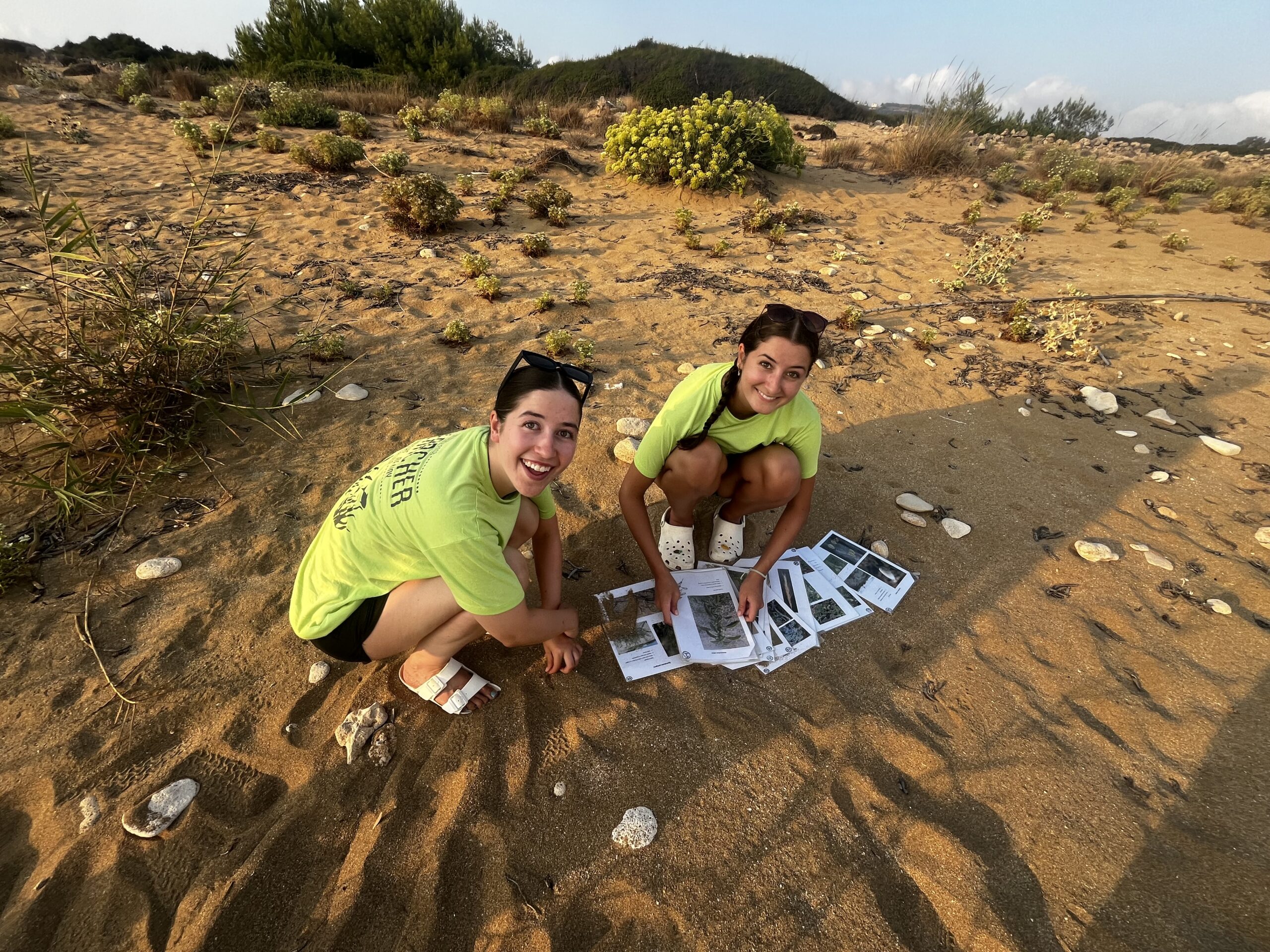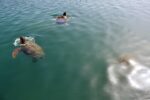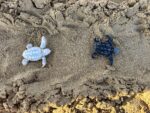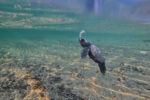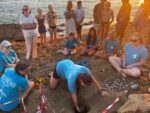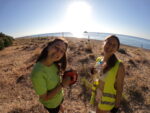Our Latest News- August 26, 2025
Svoronata Field Station
Over the past two weeks, we’ve had the pleasure of welcoming a fresh group of volunteers to our project here in Kefalonia. During our snorkel surveys, the team has already mapped several kilometers of seafloor, gathering valuable data on the state of the seagrass meadows. These habitats play a crucial role in protecting marine biodiversity, and documenting their condition helps us better understand the pressures they face.
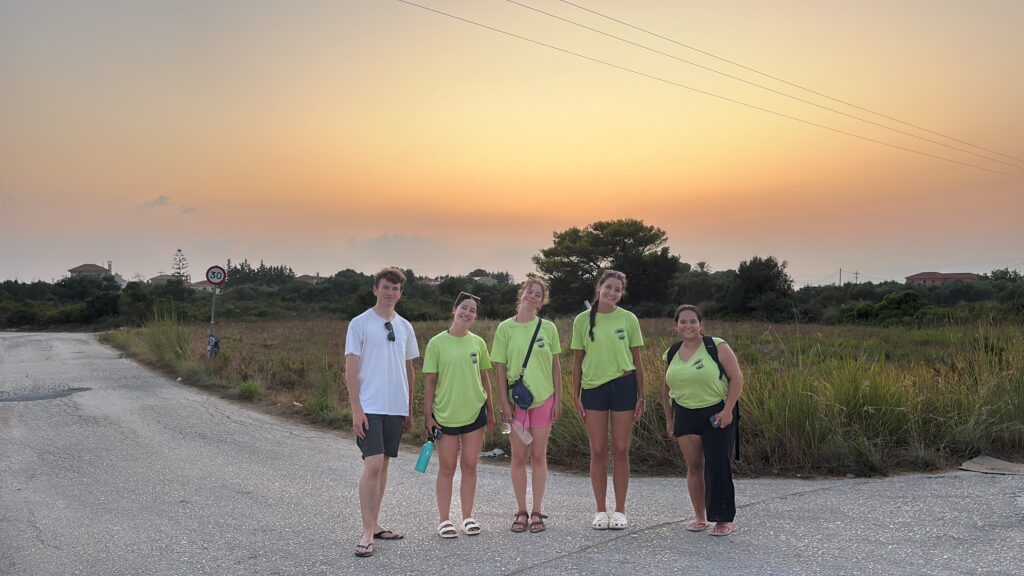
Our bird surveys have also been especially rewarding. With the use of binoculars and telescopes, volunteers identified multiple coastal bird species, adding to the growing database of seasonal visitors to the island.
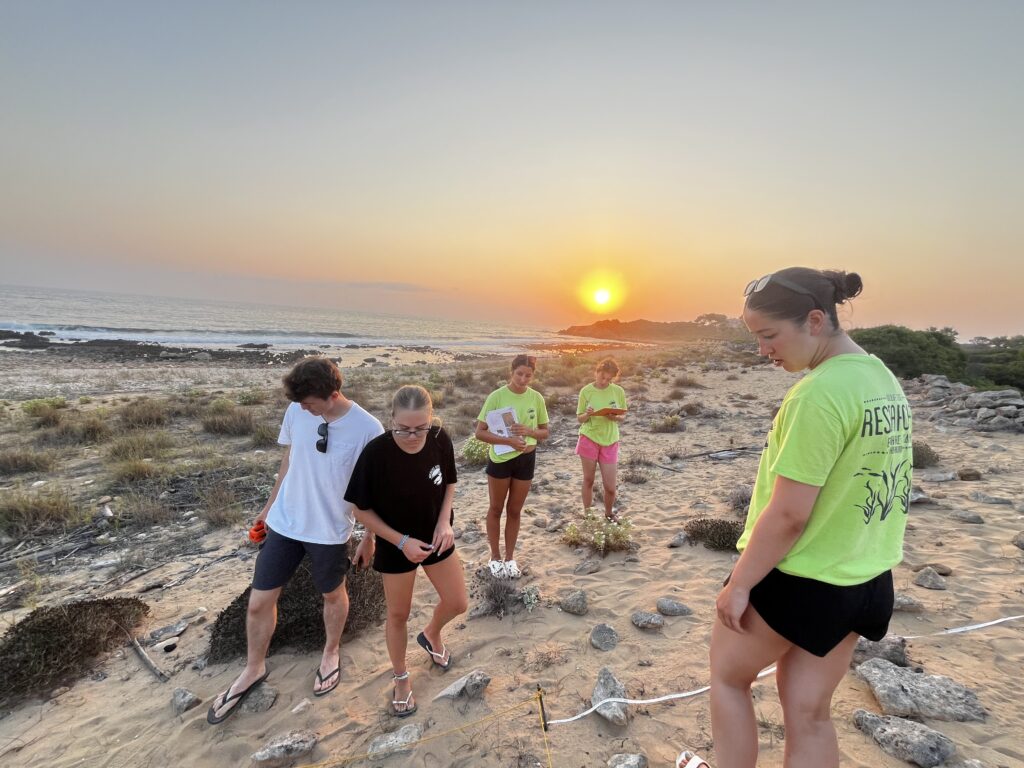
In addition, beach clean surveys have continued, with volunteers carefully categorizing the debris found along the coast. This detailed monitoring gives us insight into pollution patterns and helps strengthen awareness campaigns aimed at reducing human impact on the island’s beaches.
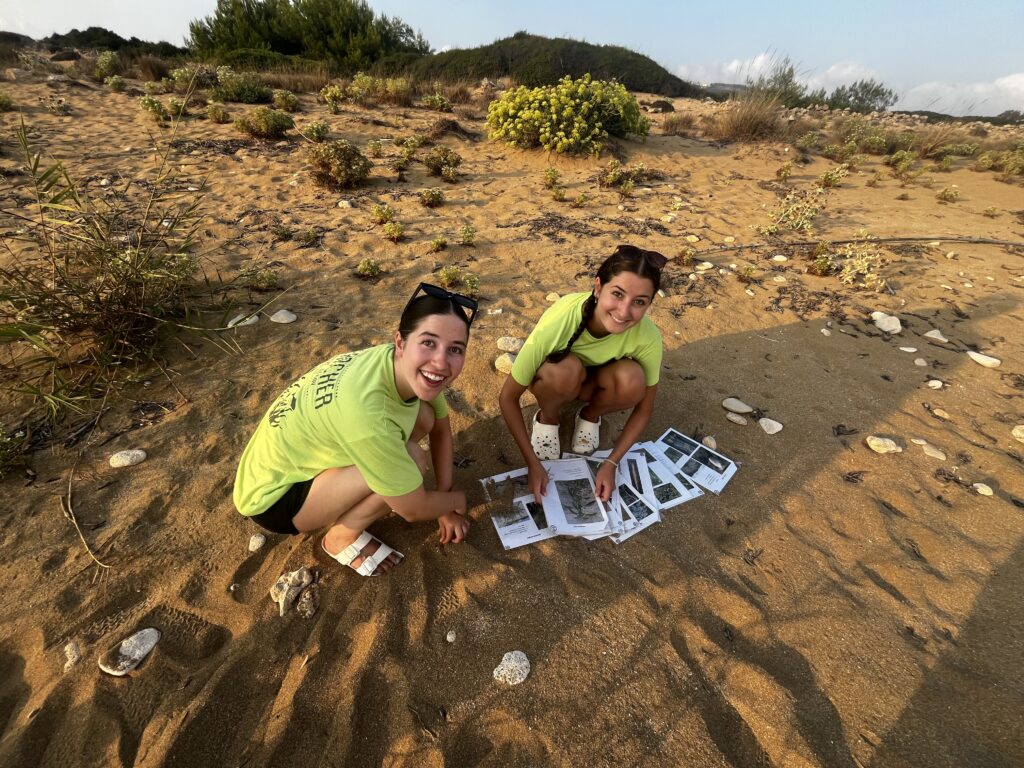
Even in just a short time, our newest team has shown great dedication and curiosity. From early morning fieldwork to late afternoon data analysis, their contributions have been essential in continuing our mission. We are excited to see what the next weeks will bring as they continue to explore, learn, and protect the unique ecosystems of Kefalonia.
Lixouri Field Station
Volunteers in Lixouri have been working hard as we hit the busy hatching period! Our protected nest count has been rapidly decreasing after some successful hatching events and inventories where we complete the nests, remove the protection and release the hatchlings to sea as we make way for next year’s nests! The volunteers have also been enjoying a new shift that has been introduced to our Field Station this week. This evening shift has volunteers monitoring light pollution across our beaches so we can better understand the impact on nesting females and hatchlings alike.
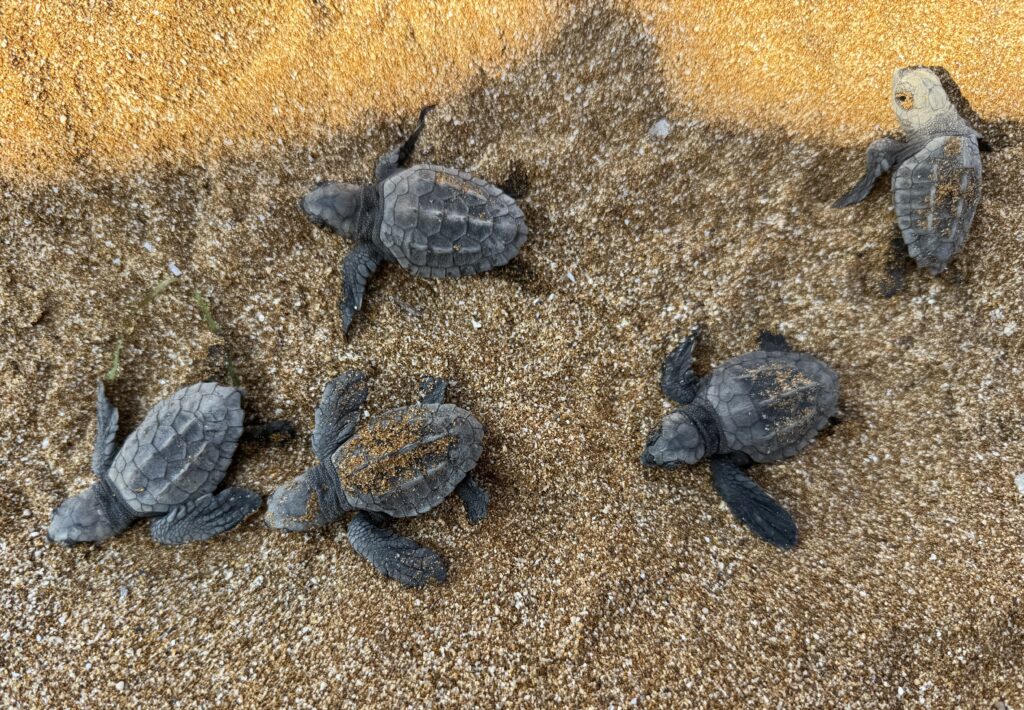
Unfortunately, our team were devastated to find that two of our nests on Agios Georgios had been vandalized. Once these nests had passed the 70-day mark of incubation with no activity, we knew that something suspicious was occurring, as the average incubation period in Lixouri is between 45-55 days. Upon investigation, we found that eggs from both of these nests a total of 217 eggs were missing as each was relocated, so eggs per nest were counted when being moved away from the sea. This is deeply worrying as we strive harder to educate the public on the importance of our work and to respect the nests. There is a small chance it could have been a predator; however they do not often cover their tracks and leave the nest protection in the same way the team found it. A report has been submitted, and we will wait for further steps to be taken if necessary.
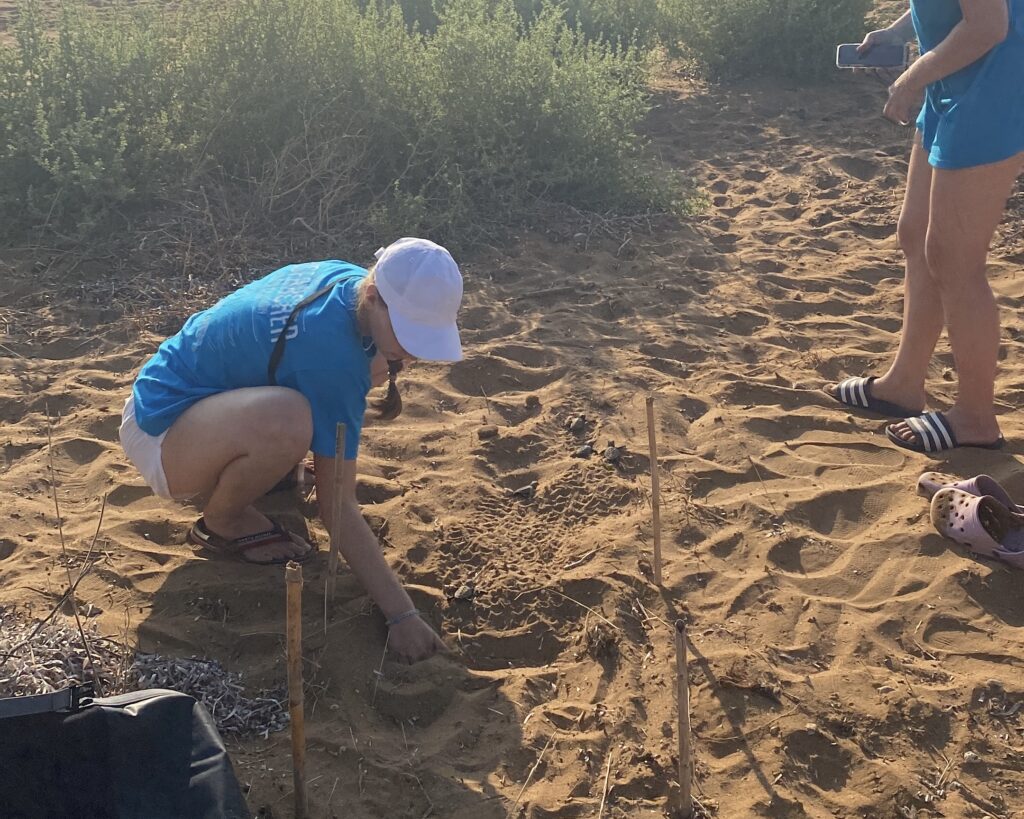
This week, on one of our morning surveys, we were surprised to find hatchlings emerging from an unmarked site! Despite our best efforts during the nesting season when we try to locate eggs from the tracks of nesting females, sometimes they can be unpredictable and not be found – that is, until 45 days later when we find the hatchling tracks! Although a less common instance, it is valuable education for our volunteers and adds some extra excitement to their morning!
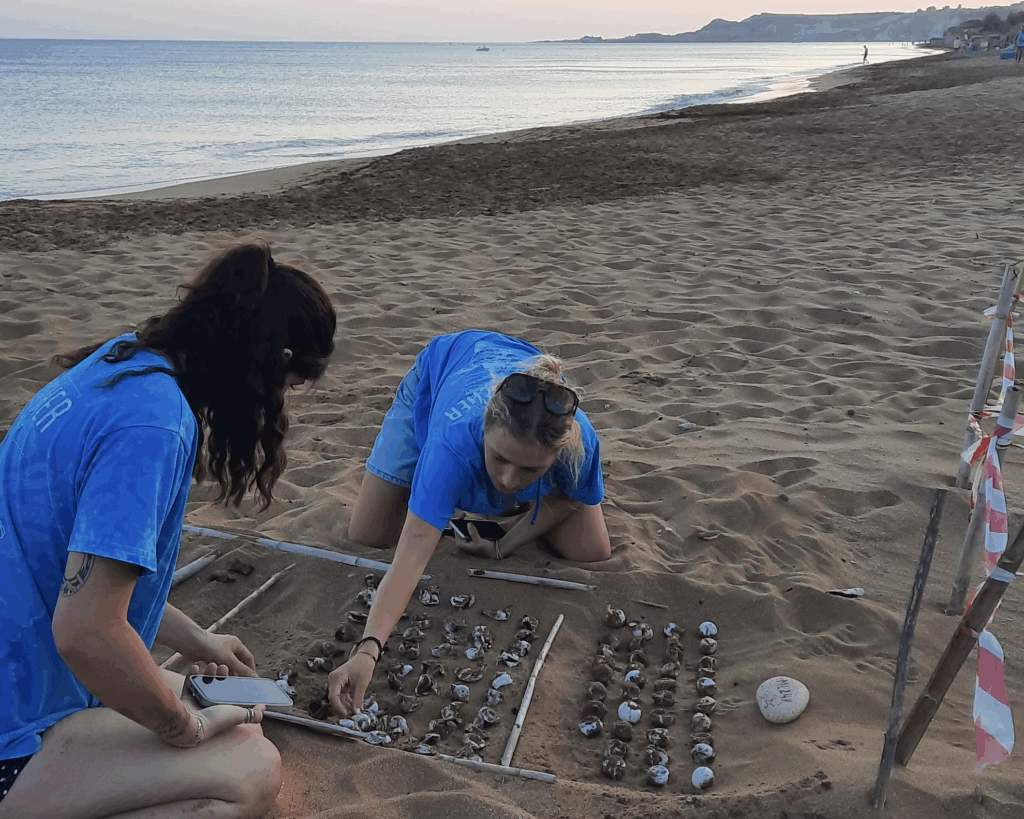
Education Program
As our EP season on Kefalonia is nearing the end, miraculously, we are still finding new nesting female tracks in the Lourdas area! During an especially busy morning, we had no other option than to protect potential nests and return to them later in the day, when it was cooler. One potential nest was on Trapezaki, between two sunbeds from a newly erected beach bar. The beach bar staff were exceptionally accommodating and reassured us that they wouldn’t allow any customers on the two adjacent sunbeds until we had completed our dig. We really appreciate this support and wouldn’t be able to complete our work as efficiently without assistance like this from locals.
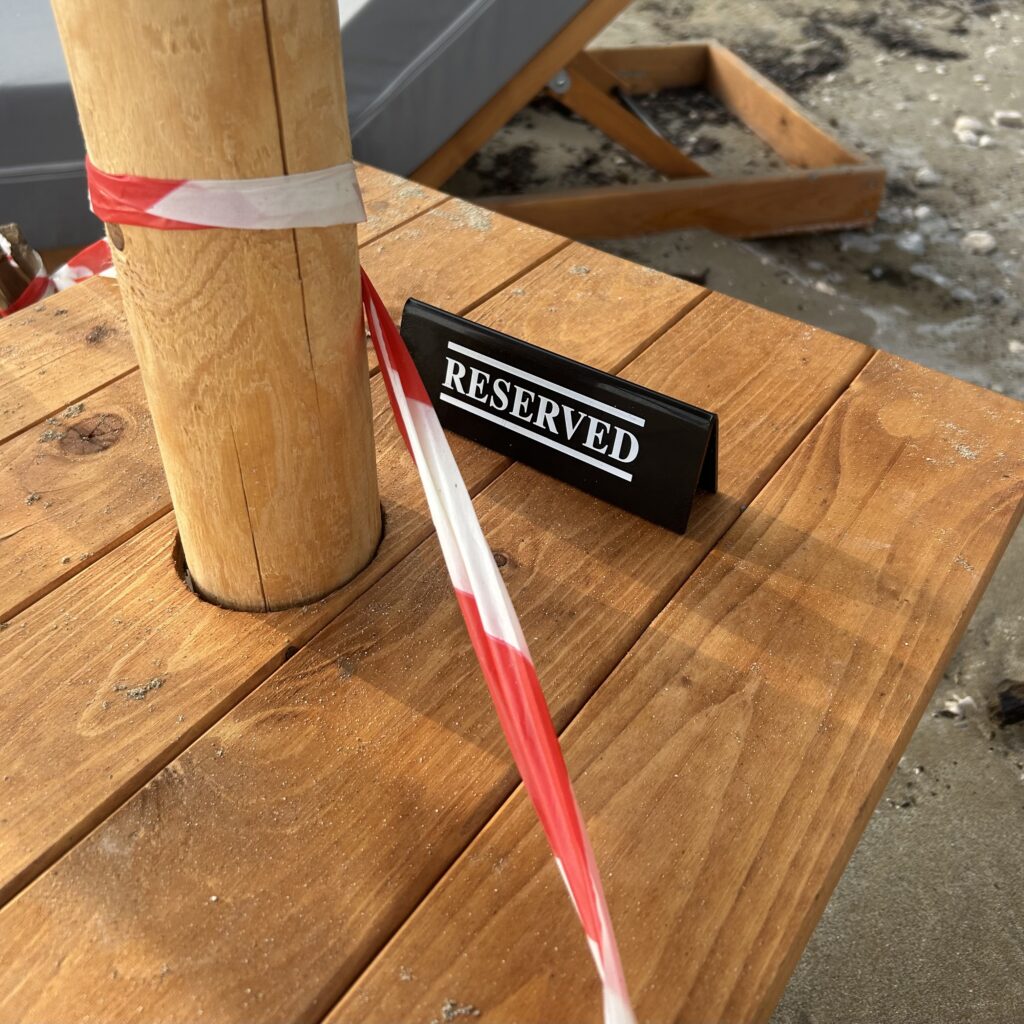
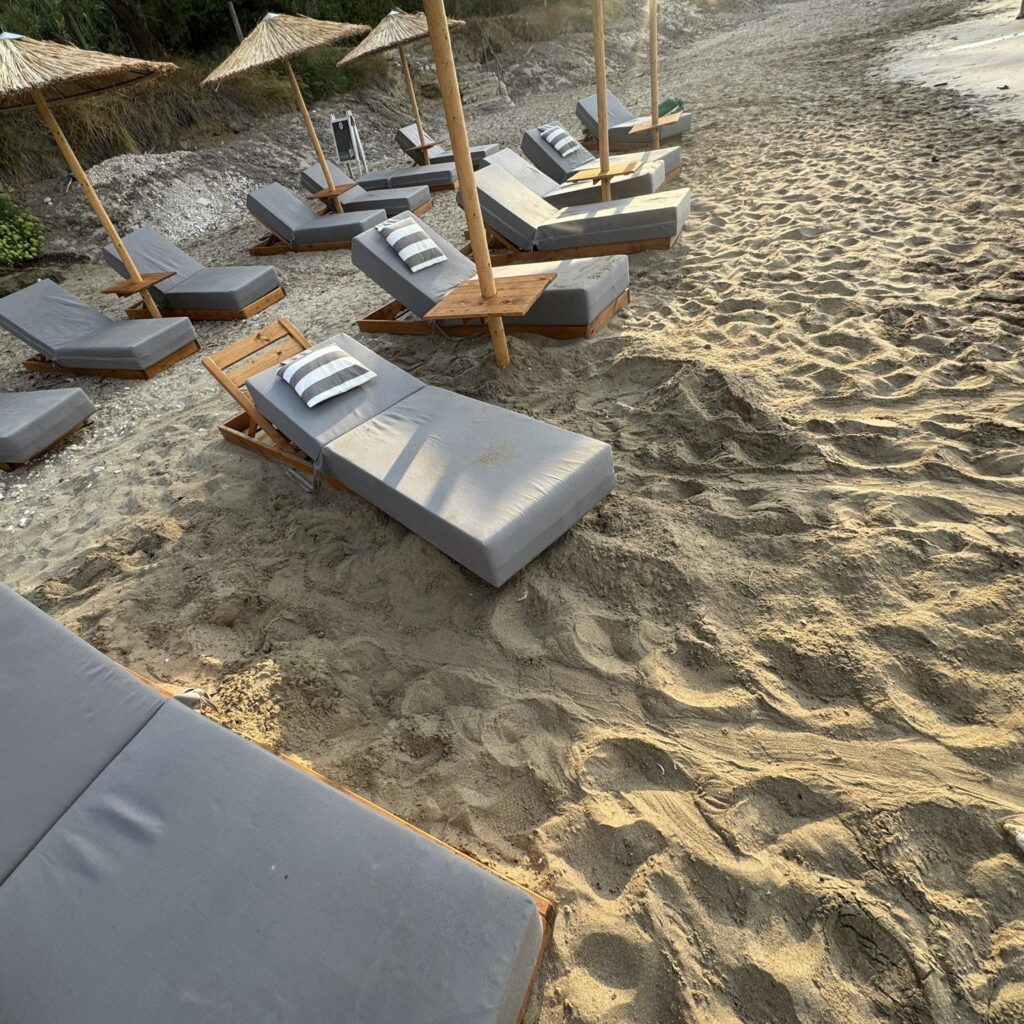
We are so pleased to finally share that we have surpassed the 50 nests mark! In our newsletter on the 30th July, we questioned whether we would even get to 40 nests, so we think it’s safe to say none of us expected to still be recording new tracks from multiple nesting females at the end of August.
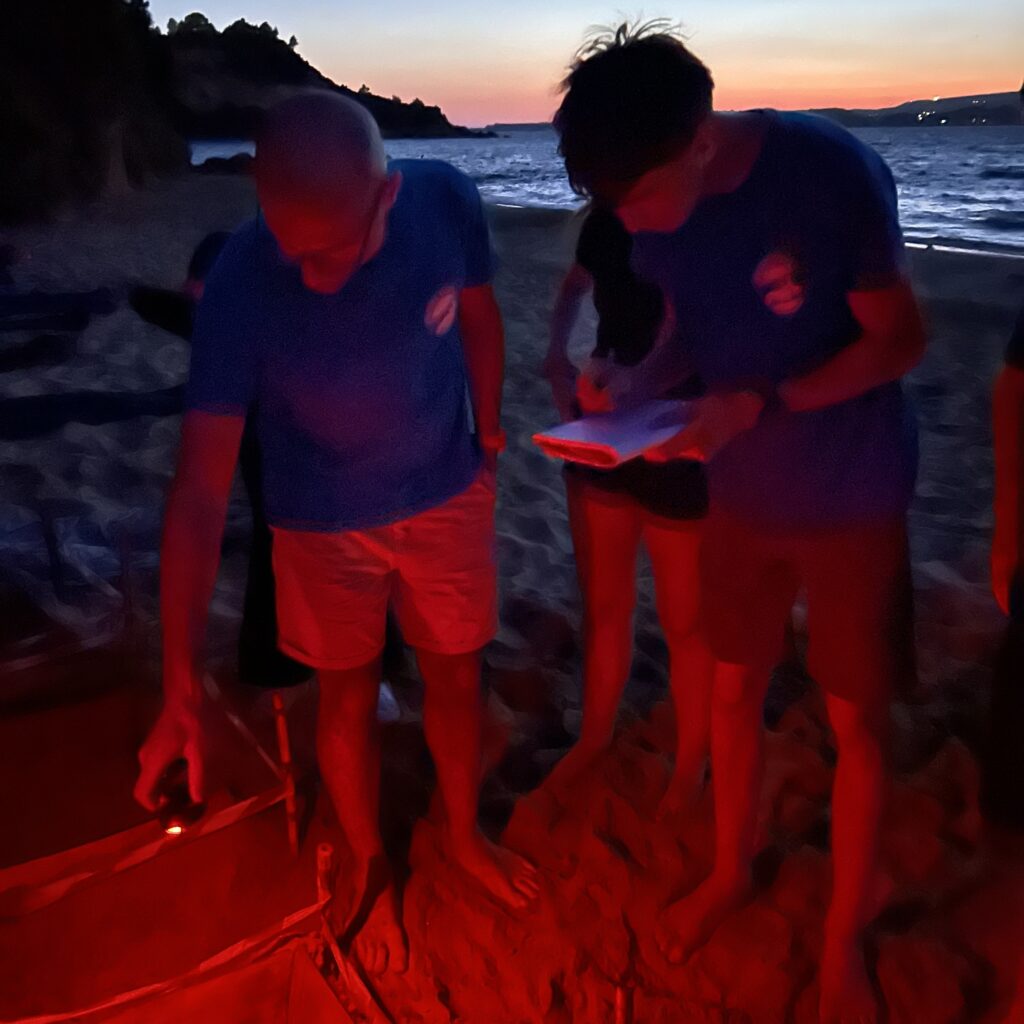
We are now with our penultimate group of the 2025 Education Programme season and are still being blown away by the energy and dedication of our volunteers – it’s truly inspirational!
Argostoli Field Station
We have had many inventories these past few weeks, and so many of our nests have started to hatch, bringing us into the midst of hatching season! We have already inventoried all nests on 3 of our survey beaches, meaning our nest numbers are dropping rapidly. Our volunteers are also really enjoying their hatchling rescue shifts, making sure all the hatchlings get to sea safely instead of getting lost due to light pollution on the beaches.
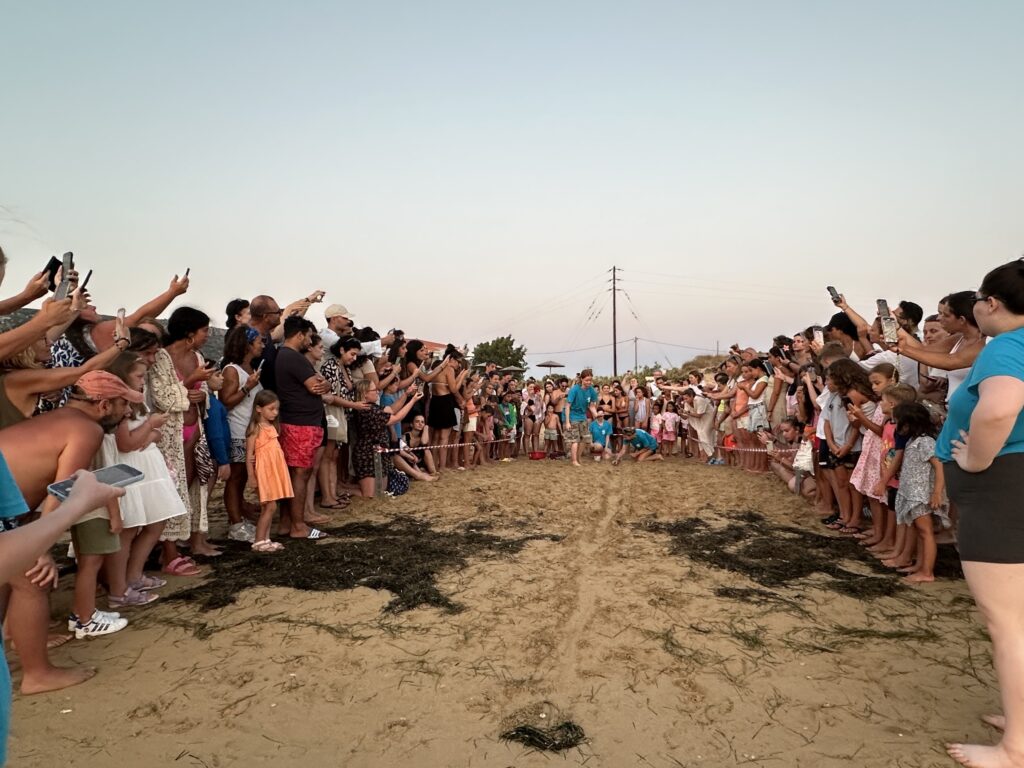
In very exciting news, we recently had one nest with 100% success, with 98 eggs hatched out of 98 total. This is a very rare but super rewarding experience, proving that our hard work during nesting season is paying off. This is so important because only 1 in 1000 make it to adulthood, so hopefully this has been a great help in increasing this probability!
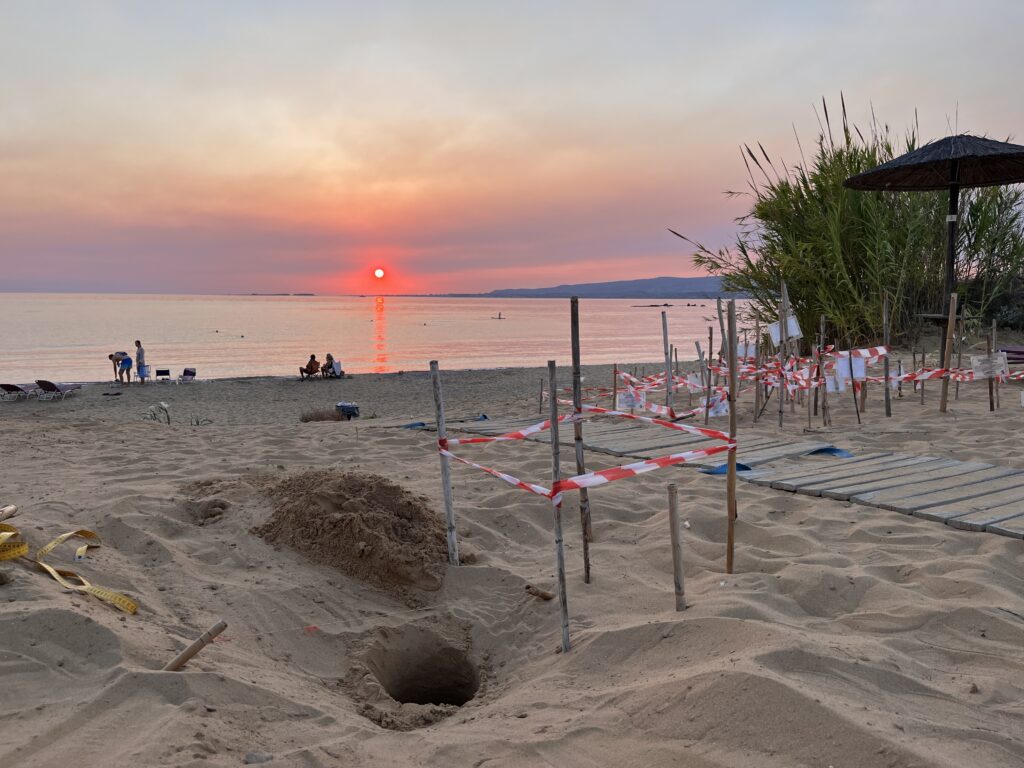
We have also had a few relocations recently! We relocate a nest to a different area if it is not in a safe location, for example, too close to the sea, to give the eggs their best chance of survival. We do this within the first 24 hours of the nest being laid to prevent any disturbances to the incubation. These nests have come from the Lixouri and Lourdas areas, and we are now able to check on these regularly until they start to hatch later in the season.
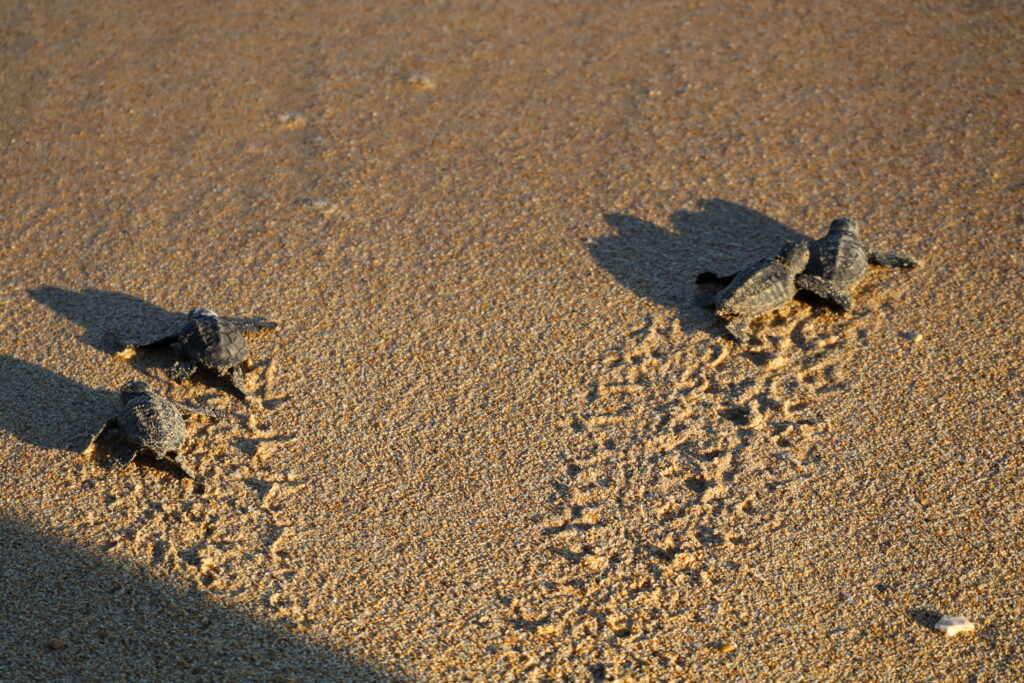
Skala Field Station
We’ve just said another goodbye here in Skala to our sixth group of the season, where, despite the windy conditions, they have managed to take a whopping 14,454 photos on our snorkel surveys, helping to map the seafloor off of our beaches!
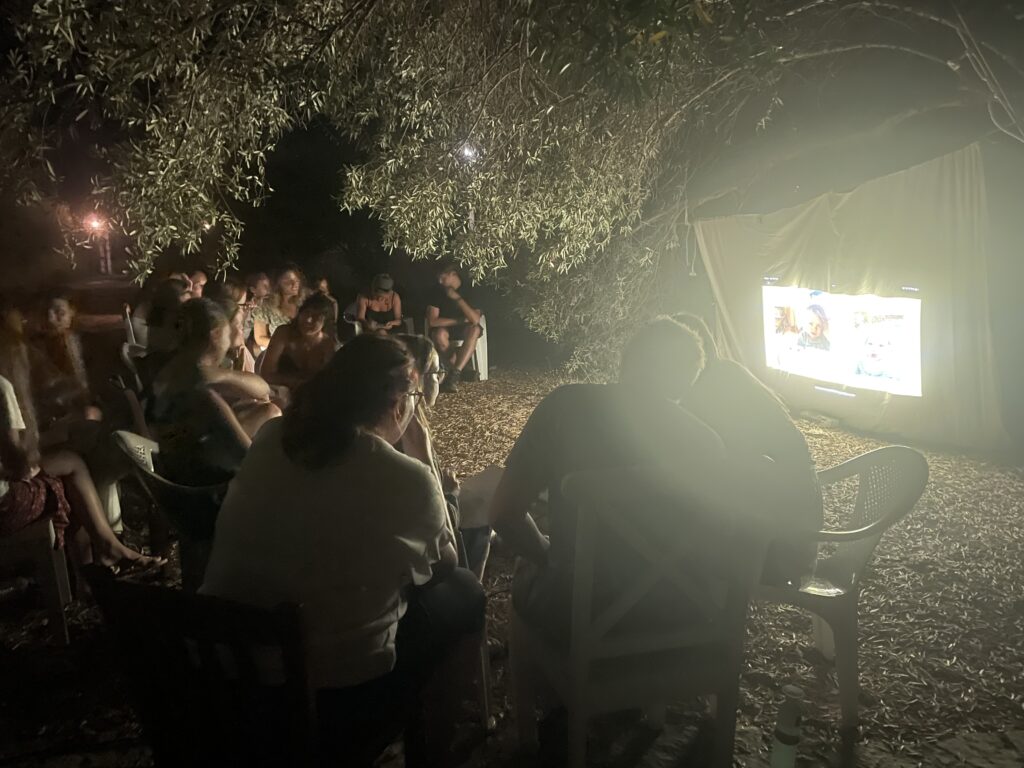
They also managed to spot our first ray of the season and our very first starfish! During sand dune surveys, 222 quadrats were recorded, and after taking a short break from light pollution in their first week to let the full moon shine, this group still managed to collect 126 readings. They were also busy collecting data on both our beach clean and beach profile shifts, and took full advantage of our evening activities with great art skills being shown on henna night and a very successful quiz night with everyone’s favourite round – baby photos!!
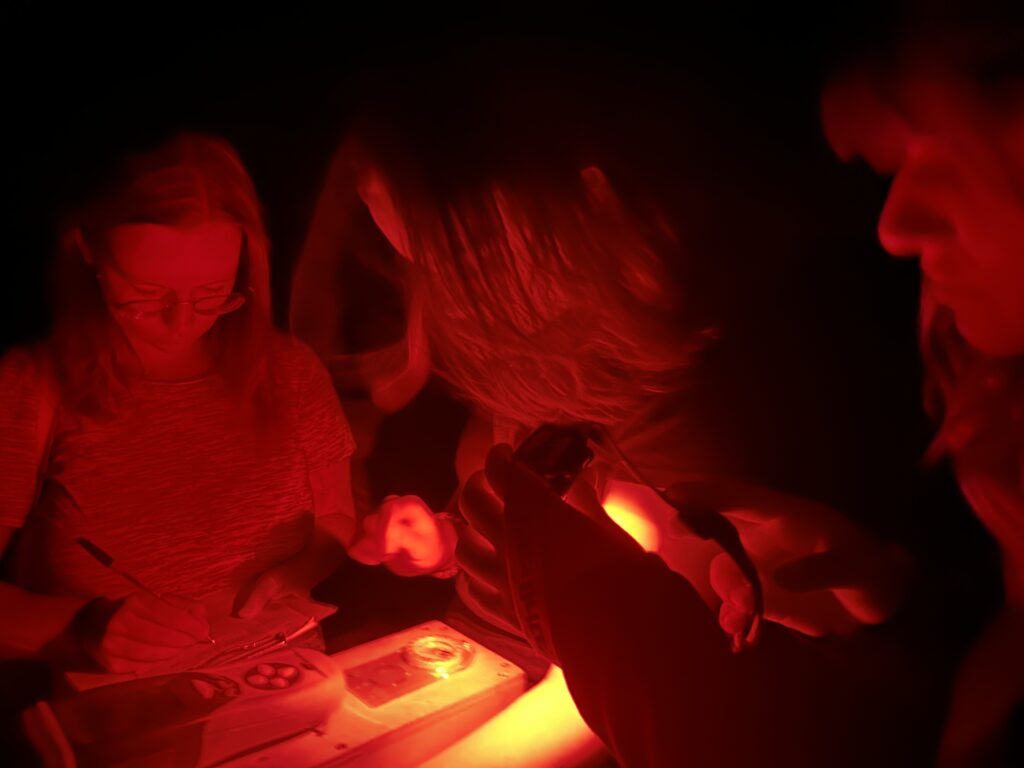
We have now welcomed our next group, who are getting stuck straight in with their training day followed by a trip to get some souvlaki. Shifts have started in the perfect way with a beautifully calm first snorkel survey! We can’t wait to see what this group gets up to over the next 2 weeks.


